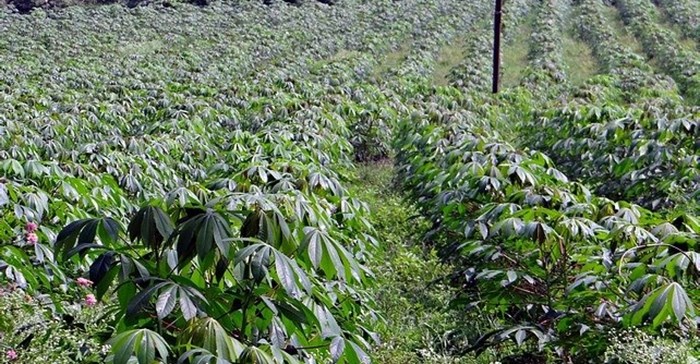
Cassava (Manihot esculenta Crantz) is known as an indispensable food and industrial crop and has thus been earmarked as the crop of the 21st Century. Based on the fact that it can be transformed into a number of both processed and manufactured products, it has the potential to alleviate poverty through job creation (directly or indirectly).
Elaborate cassava value chains have been successfully developed in many Sub-Saharan African (SSA) countries, but not many have been documented in Southern Africa. Much of the existing literature focuses on either aspects of production, or on screening for resistance to common pests and diseases (Allemann & Dugmore, 2004; DAFF, 2010; Mudombi, 2010; Ogola & Mathews, 2011). This article therefore highlights trade flows of cassava and its related products.
The article is to review the agricultural trade performance of Botswana. Botswana’s total agricultural production value in 2012 was US$ 324 million (FAOSTAT, 2015). In 2011 the country recorded its highest gross agricultural production value of US$ 71.75 million, but by 2013 it had declined by about 50%, which can be attributed to the prevailing climatic conditions and the fact that the majority of the country is too arid to sustain any agricultural activity other than cattle production. As a result, cattle and the related by-products are the main commodities produced within the country, contributing a major share towards the GDP.
This article provides synthesised information, based on the trade profile between the United States of America and South Africa, as well as a brief overview of total trade between these two nations, a discussion of AGOA classified trade from South Africa as a proportion of the USA’s total imports from South Africa, and an outline of different products traded in terms of AGOA. It is important to note that AGOA has been extended to 2025 through the AGOA Extension and Enhancement Act of 2015.
This article is necessitated by public concern in South Africa following a number of meetings between the governments of the two countries in question, as well as government statements on the status of South Africa’s membership of AGOA. On the expiry of the stipulated timespan of AGOA (2015, adjusted from the initial endpoint of 2008), some matters remain outstanding between South Africa and the USA, most significantly in relation to the antidumping duty on chicken imports from the USA into South Africa.
This article reviews the level of protection for selected industries in the agricultural sector over a 20-year period following the removal of border rates. With the global liberalisation of trade, South Africa liberalised its trade through the removal of import sanctions, border tariffs and export restrictions. The South African government decided to liberalise trade for the following reasons:
- To improve export competitiveness in the global market
- To create market access for South African exports in the global market
- To increase sector productivity